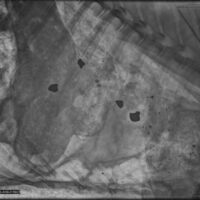 Purdue University - Extension - Forestry and Natural Resources
Purdue University - Extension - Forestry and Natural Resources
Got Nature? Blog
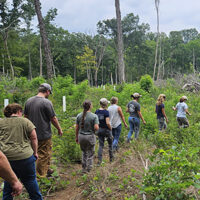 The Hardwood Tree Improvement and Regeneration Center (HTIRC) was conceived in 1998 to address a perceived void in hardwood tree improvement research in the Central Hardwood Forest Region (CHFR) and is committed to enhancing the productivity and quality of CHFR trees and forests for the economic and environmental benefits they provide. Scientists at the HTIRC are using conventional tree improvement breeding as well as molecular and genetic technologies to improve the wood quality, growth characteristics, and insect and disease resistance of trees like black walnut, black cherry, red and white oaks, butternut and American chestnut. Research in tree breeding, tree nursery practices, tree plantation establishment and management, and Central Hardwoods silvicultural systems is aimed at increasing the regeneration success rate for high-quality hardwood trees and forests.
The Hardwood Tree Improvement and Regeneration Center (HTIRC) was conceived in 1998 to address a perceived void in hardwood tree improvement research in the Central Hardwood Forest Region (CHFR) and is committed to enhancing the productivity and quality of CHFR trees and forests for the economic and environmental benefits they provide. Scientists at the HTIRC are using conventional tree improvement breeding as well as molecular and genetic technologies to improve the wood quality, growth characteristics, and insect and disease resistance of trees like black walnut, black cherry, red and white oaks, butternut and American chestnut. Research in tree breeding, tree nursery practices, tree plantation establishment and management, and Central Hardwoods silvicultural systems is aimed at increasing the regeneration success rate for high-quality hardwood trees and forests.
In this Fall 2023 HTIRC Newsletter you will find current research happenings that include:
- Douglass Jacobs Co-leader on Assessment of At-Risk Forest Trees – Douglass Jacobs of the HTIRC and Kasten Dumroese of the U.S. Forest Service led a team of 19 co-authors, including scientists, land managers and regulators, in presenting their findings on biotechnological risk assessment and forest tree restoration
- Annual Report Available for 2022 – The annual report outlining HTIRC research projects, strategic directions and accomplishments is now available on the HTIRC website at Annual Report.
- Indiana Conservation Partnership Training – In August of 2023, Extension and Property Management staff from HTIRC and Purdue Forestry and Natural Resources provided hands-on training days at the Purdue FNR Martell Forest and Southeast Purdue Ag Center properties for members of the Indiana Conservation Partnership, including USDA NRCS, Indiana SWCD, Indiana DNR, and Purdue Extension employees.
- HTIRC Participates in Walnut Council Annual Conference – Several members of the HTIRC staff helped organize and presented at the annual National Walnut Council conference in Columbia, Missouri in July or 2023. This year was a unique event with three organizations joining forces for an impressive array of presentations an field tours.
- Forgey Wins “Sagamore of the Wabash” Award – Michael Forgey, a resident of New Palestine and a seasoned Rush County farmer, was honored with the prestigious “Sagamore of the Wabash” award by Governor Eric Holcomb at the Forgey Tree Farm in Rush County, Indiana on November 1, 2023.
- The HTIRC 2023 Seed Harvest – Seed production is a crucial component of the HTIRC’s improvement program, for without it there is no progeny testing or distribution of improved genetics to the public. This year, a droughty spring and early summer was followed by an unusually wet July, stimulating a bumper crop in the HTIRC’s orchards.
View the full Fall 2023 HTIRC Newsletter and meet the new administrative assistant, learn more about the awards received and current research.
Resources:
HTIRC 2020 Annual Report
Hardwood Tree Improvement & Regeneration Center (HTIRC)
Tropical Hardwood Tree Improvement & Regeneration Center (tropHTIRC)
Partners, Purdue Forestry & Natural Resources
An Introduction to Trees of Indiana, The Education Store, Purdue Extension resource center
Native Trees of the Midwest, The Education Store
Shrubs and Woody Vines of Indiana and the Midwest, The Education Store
ID That Tree, Playlist, Subscribe to Purdue Extension – Forestry and Natural Resources YouTube Channel
A Woodland Management Moment, Playlist, Purdue Extension – FNR YouTube Channel
Investing in Indiana Woodlands, The Education Store
Forest Improvement Handbook, The Education Store
Finding help from a professional forester, Indiana Forestry & Woodland Owners Association
District Foresters for 10 plus acres, Indiana Department of Natural Resources
Wood Products, FNR Concentration
Hardwood Tree Improvement Regeneration Center (HTIRC)
In this edition of ID That Tree, we’re going to introduce you to another member of the oak family found in Indiana, and that’s northern pin oak. You can find it in the northern part of Indiana on dry and sandy soils. It’s a member of the red and black oak group, so it has bristle tips on the ends of the lobes of the leaves. The twigs can be found anywhere from medium to dark grey, and the buds are very dark and sharply pointed.
If you have any questions regarding wildlife, trees, forest management, wood products, natural resource planning or other natural resource topics, feel free to contact us by using our Ask an Expert web page.
Resources:
ID That Tree, Playlist, Purdue Extension – Forestry and Natural Resources (FNR) YouTube Channel (Invasive White Mulberry, Siberian Elm, Tree of Heaven)
Invasive Species Playlist, Playlist, Purdue Extension – FNR YouTube Channel (Asian Bush Honeysuckle, Burning Bush, Callery Pear, Multiflora rose)
A Woodland Management Moment, Playlist, Purdue Extension – FNR YouTube Channel (Against Invasives, Garlic Mustard, Autumn Olive)
Woodland Stewardship for Landowners, Playlist, Purdue Extension – FNR YouTube Channel (Common Buckthorn, Japanese Barberry)
How long do seeds of the invasive tree, Ailanthus altissima remain viable? (Invasive Tree of Heaven), USDA Forest Service
Indiana Department of Natural Resources: Invasive Species
Indiana Invasive Species Council
Cooperative Invasive Species Management Area (CISMA)
Report Invasive, Purdue Extension
Aquatic Invasive Species, Illinois-Indiana Sea Grant (IISG)
Episode 11 – Exploring the challenges of Invasive Species, Habitat University-Natural Resource University
What are invasive species and why should I care?, Got Nature? Blog, Purdue Extension – FNR
Shrubs and Woody Vines of Indiana and the Midwest, The Education Store, Purdue Extension Resource Center
Native Trees of the Midwest, The Education Store
Investing in Indiana Woodlands, The Education Store
Professional Forester, Indiana Forestry Woodland Owners Association
District Forester 10+acres of woodlands, Indiana Department of Natural Resources
Forest Improvement Handbook, The Education Store
Lenny Farlee, Extension Forester
Hardwood Tree Improvement and Regeneration Center
Purdue Department of Forestry & Natural Resources
Wild Bulletin, Indiana Department of Natural Resources (DNR) Fish and Wildlife: Did you know that wild game shot with lead ammunition can sometimes contain lead fragments all the way to the dinner table? Adopting different shot placement and butchering techniques can help alleviate the problem.
When shooting: Avoid shooting animals in heavily boned areas, such as the front shoulders, as this is more likely to cause bullet fragmentation. Instead, shoot animals in softer tissue, such as around the heart and lungs, to decrease fragmentation.
When butchering: Carefully observe the wound channel in the animal and generously trim away any meat that shows bullet trauma. This will help keep fragments out of your finished meat product. Properly dispose of your trimmed meat by sending it to the local landfill or burying it on private property.
Looking for another way for you and your family to avoid ingesting lead fragments? Talk to your local retailer about finding a nontoxic ammunition that’s right for you.
To learn more please visit DNR: Effects of lead on wildlife.
Resources:
Hunting Guide for 2023-2024, Indiana Department of Natural Resources
How to Score Your White-tailed Deer, video, The Education Store, Purdue Extension Resource Center
White-Tailed Deer Post Harvest Collection, video, The Education Store
Age Determination in White-tailed Deer, video, The Education Store
How to Build a Plastic Mesh Deer Exclusion Fence, The Education Store
Managing Your Woods for White-Tailed Deer, The Education Store
Bovine Tuberculosis in Wild White-tailed Deer, The Education Store
Help With Wild Turkey Populations, Video, Purdue Extension – Forestry and Natural Resources YouTube Channel
Turkey Brood Reporting, Indiana Department of Natural Resources (IDNR)
Wild Turkey, Indiana Department of Natural Resources (IDNR)
Wild Turkey Hunting Biology and Management, Indian Department of Natural Resources (IDNR)
Subscribe to Purdue Extension-Forestry & Natural Resources YouTube Channel, Wildlife Playlist
Indiana Department of Natural Resources
In this edition of ID That Tree, we’re going to introduce you to a native Indiana species, and that’s sourwood. It’s much more common in the Appalachian mountain range, but can be found on Indiana’s southern boundary across the Ohio River. Sourwood gets its name from its sour/bitter flavor when you taste it. It has alternate leave arrangement, simple leaves, and very finely serrated margins. It can also put on a great fall color.
If you have any questions regarding wildlife, trees, forest management, wood products, natural resource planning or other natural resource topics, feel free to contact us by using our Ask an Expert web page.
Resources:
ID That Tree, Playlist, Purdue Extension – Forestry and Natural Resources (FNR) YouTube Channel (Invasive White Mulberry, Siberian Elm, Tree of Heaven)
Invasive Species Playlist, Playlist, Purdue Extension – FNR YouTube Channel (Asian Bush Honeysuckle, Burning Bush, Callery Pear, Multiflora rose)
A Woodland Management Moment, Playlist, Purdue Extension – FNR YouTube Channel (Against Invasives, Garlic Mustard, Autumn Olive)
Woodland Stewardship for Landowners, Playlist, Purdue Extension – FNR YouTube Channel (Common Buckthorn, Japanese Barberry)
How long do seeds of the invasive tree, Ailanthus altissima remain viable? (Invasive Tree of Heaven), USDA Forest Service
Indiana Department of Natural Resources: Invasive Species
Indiana Invasive Species Council
Cooperative Invasive Species Management Area (CISMA)
Report Invasive, Purdue Extension
Aquatic Invasive Species, Illinois-Indiana Sea Grant (IISG)
Episode 11 – Exploring the challenges of Invasive Species, Habitat University-Natural Resource University
What are invasive species and why should I care?, Got Nature? Blog, Purdue Extension – FNR
Shrubs and Woody Vines of Indiana and the Midwest, The Education Store, Purdue Extension Resource Center
Native Trees of the Midwest, The Education Store
Investing in Indiana Woodlands, The Education Store
Professional Forester, Indiana Forestry Woodland Owners Association
District Forester 10+acres of woodlands, Indiana Department of Natural Resources
Forest Improvement Handbook, The Education Store
Lenny Farlee, Extension Forester
Hardwood Tree Improvement and Regeneration Center
Purdue Department of Forestry & Natural Resources
Wild Bulletin, Indiana Department of Natural Resources (DNR) Fish and Wildlife: In 2023, we saw wildlife wins for many rare and endangered species. We found a very young hellbender salamander in the Blue River and increased public awareness and interest in bat conservation. We discovered the banded pygmy sunfish at Twin Swamps Nature Preserve and doubled the number of active barn owl nests from five years ago.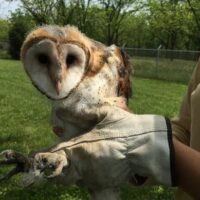
These wildlife wins would not have been possible without those who support the Nongame Wildlife Fund. To all of you who help care for Indiana’s rare and endangered wildlife, thank you!
If you’d like to make a positive impact on Indiana’s wildlife, consider getting involved today. Subscribe to the Indiana DNR Division of Fish & Wildlife Newsletter, IN Fish & Wildlife Instagram, and IN Fish & Wildlife Facebook to stay up to date with the IN DNR-Division of Fish & Wildlife’s latest wildlife wins. Make a volunteer profile and learn more about how to become a DNR volunteer, or make a donation to the Nongame Wildlife Fund. For every $50 given to the Nongame Wildlife Fund, an additional $43 is unlocked in federal funding, making every dollar you donate go even further for Indiana’s wildlife.
To learn more please visit DNR: Nongame and Endangered Wildlife.
Resources:
Researchers Discover Young Hellbender in Blue River, Purdue Forestry and Natural Resources News & Stories
Help the Hellbender, North America’s Giant Salamander, The Education Store
Help the Hellbender website
Help the Hellbender Facebook page
Barn Owl, Indiana Department of Natural Resources
Bats in Indiana, Indiana Department of Natural Resources (IN DNR)
Bat Houses, Bat Conservation International
Creating a Wildlife Habitat Management Plan for Landowners, The Education Store, Purdue Extension’s resource center
Ask an Expert: Turtles and Snakes, video
Ask an Expert: Managing Your Property for Fish and Wildlife, video
A Template for Your Wildlife Habitat Management Plan, publication
Frost Seeding to Establish Wildlife Food Plots and Native Grass and Forb Plantings, video
Connecting Youth to Wildlife Webinar
Developing a Wildlife Habitat Management Plan, The Education Store
Indiana Department of Natural Resources
In this edition of ID That Tree, we’re going to introduce you to two species found in Indiana. One of them is a native called blackhaw, and the other an invasive called burning bush. Blackhaw has opposite simple leaves, very finely toothed margins, and elongated buds that have a grey haze to them. It also has a striking fall color. Burning bush on the other hand is an invasive spread by seeding itself through birds and other wildlife. It also has opposite leaf arrangement but much smaller leaves that are a bit more elongated.
If you have any questions regarding wildlife, trees, forest management, wood products, natural resource planning or other natural resource topics, feel free to contact us by using our Ask an Expert web page.
Resources:
ID That Tree, Playlist, Purdue Extension – Forestry and Natural Resources (FNR) YouTube Channel (Invasive White Mulberry, Siberian Elm, Tree of Heaven)
Invasive Species Playlist, Playlist, Purdue Extension – FNR YouTube Channel (Asian Bush Honeysuckle, Burning Bush, Callery Pear, Multiflora rose)
A Woodland Management Moment, Playlist, Purdue Extension – FNR YouTube Channel (Against Invasives, Garlic Mustard, Autumn Olive)
Woodland Stewardship for Landowners, Playlist, Purdue Extension – FNR YouTube Channel (Common Buckthorn, Japanese Barberry)
Invasive Plant Series: Winged Burning Bush, Got Nature? Blog, Purdue Extension – FNR
Invasive Plant Series: Winged Burning Bush, The Education Store
How long do seeds of the invasive tree, Ailanthus altissima remain viable? (Invasive Tree of Heaven), USDA Forest Service
Indiana Department of Natural Resources: Invasive Species
Indiana Invasive Species Council
Cooperative Invasive Species Management Area (CISMA)
Report Invasive, Purdue Extension
Aquatic Invasive Species, Illinois-Indiana Sea Grant (IISG)
Episode 11 – Exploring the challenges of Invasive Species, Habitat University-Natural Resource University
What are invasive species and why should I care?, Got Nature? Blog, Purdue Extension – FNR
Shrubs and Woody Vines of Indiana and the Midwest, The Education Store, Purdue Extension Resource Center
Native Trees of the Midwest, The Education Store
Investing in Indiana Woodlands, The Education Store
Professional Forester, Indiana Forestry Woodland Owners Association
District Forester 10+acres of woodlands, Indiana Department of Natural Resources
Forest Improvement Handbook, The Education Store
Lenny Farlee, Extension Forester
Hardwood Tree Improvement and Regeneration Center
Purdue Department of Forestry & Natural Resources
Wild Bulletin, Indiana Department of Natural Resources (DNR) Fish and Wildlife: Indiana DNR has been working with neighboring states to address the invasive carp problem in our waters. The Kentucky Department of Fish and Wildlife Resources has been using contract fishers to harvest invasive carp from the middle Ohio River at the leading edge of invasive carp’s established population, and the Indiana Division of Fish & Wildlife provides support as needed. The contract fishing program will be operating through the winter and spring. Most fishing will occur from Leavenworth to Cannelton, Indiana, in small tributaries and backwaters off the Ohio River. Agency staff will ride along with contract fishers to collect data and ensure native fish populations are not negatively impacted.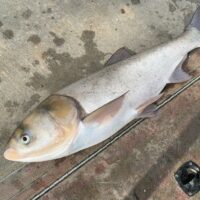
Throughout the year, biologists are involved in several other collaborative research and monitoring projects to slow the spread of invasive carp within the Ohio River basin. If you encounter an invasive carp and are wondering what to do with it, try eating it! Our website includes information on how to clean and prepare silver carp for a tasty meal, as well as descriptions of other DNR projects that address invasive carp.
To learn more please visit DNR: Invasive Carp.
Resources:
Asian carp solutions: Take them to market, Illinois-Indiana Sea Grant
Asian carp, Illinois-Indiana Sea Grant
Asian carp, Purdue College of Agriculture
Invasive Species, Playlist, Purdue Extension – FNR YouTube Channel
What are invasive species and why should I care?, Got Nature? Blog, Purdue Extension – Forestry and Natural Resources
Report Invasive Species, Purdue Invasive Species
Walleye Farmed Fish Fact Sheet, The Education Store, Purdue Extension’s resource center
Pacific White Shrimp Farmed Fact Sheet, The Education Store
Yellow Perch Farmed Fish Fact Sheet, The Education Store
Tilapia Farmed Fish Fact Sheet, The Education Store
Rainbow Trout Farmed Fish Fact Sheet, The Education Store
American Paddlefish, The Education Store
A Guide to Small-Scale Fish Processing Using Local Kitchen Facilities, The Education Store
Eat Midwest Fish, Illinois-Indiana Sea Grant online resource hub
Indiana Department of Natural Resources
MyDNR, Indiana’s Outdoor Newsletter: The latest Hunting Guide for 2023-2024 is available. The Division of Fish & Wildlife is excited to show off the many methods and precautions needed to be successful during hunting season. Here are some current in season game you can hunt.
Hunting seasons in December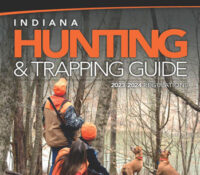
Deer Muzzleloader: Dec. 9–24
Wild Turkey Fall Archery: Dec. 2, 2023–Jan. 7, 2024
Pheasant (Cock only): Closes Dec. 15
Dove: Dec. 16, 2023–Jan. 3, 2024
Crow: Dec. 13, 2023–March 1, 2024
Snipe: Closes Dec. 16
Quail (north of Interstate 74): Closes Dec. 15
Quail (south of Interstate 74): Closes Jan. 10, 2024
Ducks (North Zone): Closes Dec. 17, reopens Dec. 26, 2023–Jan. 3. 2024
Ducks (South Zone): Dec. 2, 2023–Jan. 28, 2024
For more information on hunting dates please our Indiana 2023-2024 Hunting & Trapping Seasons.
For questions on licenses and fees view Licenses & Permits, Indiana Department of Natural Resources
To subscribe to the newsletter visit MyDNR Email Newsletter.
Explore the outdoors with Indiana Department of Natural Resources in their 24 state parks, Indiana State Parks and Lakes.
Resources:
Hunting Guide for 2023-2024, Indiana Department of Natural Resources
How to Score Your White-tailed Deer, video, The Education Store, Purdue Extension Resource Center
White-Tailed Deer Post Harvest Collection, video, The Education Store
Age Determination in White-tailed Deer, video, The Education Store
How to Build a Plastic Mesh Deer Exclusion Fence, The Education Store
Managing Your Woods for White-Tailed Deer, The Education Store
Bovine Tuberculosis in Wild White-tailed Deer, The Education Store
Help With Wild Turkey Populations, Video, Purdue Extension – Forestry and Natural Resources YouTube Channel
Turkey Brood Reporting, Indiana Department of Natural Resources (IDNR)
Wild Turkey, Indiana Department of Natural Resources (IDNR)
Wild Turkey Hunting Biology and Management, Indian Department of Natural Resources (IDNR)
Subscribe to Purdue Extension-Forestry & Natural Resources YouTube Channel, Wildlife Playlist
Indiana Department of Natural Resources, Department of Fish & Wildlife
In this edition of ID That Tree, we’re going to introduce you to a native Indiana species, and that’s grey birch. It can be found in the northern part of Indiana near Lake Michigan. It can be defined by its long and pointed triangular shape, and it toothed margins on the edges of the leaf. It has very limber twigs and the leaves are arranged alternately. Also the fruiting flower structure can be identified as a catkin.
If you have any questions regarding wildlife, trees, forest management, wood products, natural resource planning or other natural resource topics, feel free to contact us by using our Ask an Expert web page.
Resources:
ID That Tree, Playlist, Purdue Extension – Forestry and Natural Resources (FNR) YouTube Channel (Invasive White Mulberry, Siberian Elm, Tree of Heaven)
Invasive Species Playlist, Playlist, Purdue Extension – FNR YouTube Channel (Asian Bush Honeysuckle, Burning Bush, Callery Pear, Multiflora rose)
A Woodland Management Moment, Playlist, Purdue Extension – FNR YouTube Channel (Against Invasives, Garlic Mustard, Autumn Olive)
Woodland Stewardship for Landowners, Playlist, Purdue Extension – FNR YouTube Channel (Common Buckthorn, Japanese Barberry)
How long do seeds of the invasive tree, Ailanthus altissima remain viable? (Invasive Tree of Heaven), USDA Forest Service
Indiana Department of Natural Resources: Invasive Species
Indiana Invasive Species Council
Cooperative Invasive Species Management Area (CISMA)
Report Invasive, Purdue Extension
Aquatic Invasive Species, Illinois-Indiana Sea Grant (IISG)
Episode 11 – Exploring the challenges of Invasive Species, Habitat University-Natural Resource University
What are invasive species and why should I care?, Got Nature? Blog, Purdue Extension – FNR
Shrubs and Woody Vines of Indiana and the Midwest, The Education Store, Purdue Extension Resource Center
Native Trees of the Midwest, The Education Store
Investing in Indiana Woodlands, The Education Store
Forest Improvement Handbook, The Education Store
Lenny Farlee, Extension Forester
Hardwood Tree Improvement and Regeneration Center
Purdue Department of Forestry & Natural Resources
 A real Christmas tree is an important part of a holiday celebration for many Hoosier households. Consumers have several choices for purchasing a real tree, including pre-cut trees at retail outlets or seasonal sales locations, choose-and-cut trees at Christmas tree farms, or even live trees that can be replanted after the holidays. Purdue Extension offers two publications that can help you select and care for your tree: Tips for First-Time Buyers of Christmas Trees provides advice and direction on how to set up and care for your tree to improve safety and enjoyment. Selecting an Indiana-Grown Christmas Tree provides details on the characteristics of different species of real Christmas trees available in Indiana, as well as care instructions for cut and live Christmas trees.
A real Christmas tree is an important part of a holiday celebration for many Hoosier households. Consumers have several choices for purchasing a real tree, including pre-cut trees at retail outlets or seasonal sales locations, choose-and-cut trees at Christmas tree farms, or even live trees that can be replanted after the holidays. Purdue Extension offers two publications that can help you select and care for your tree: Tips for First-Time Buyers of Christmas Trees provides advice and direction on how to set up and care for your tree to improve safety and enjoyment. Selecting an Indiana-Grown Christmas Tree provides details on the characteristics of different species of real Christmas trees available in Indiana, as well as care instructions for cut and live Christmas trees.
Pre-cut real Christmas trees are available at many retail outlets like garden centers, supermarkets, or seasonal sales locations. If you are looking for local choose-and-cut Christmas tree farms you can consult local media and advertising outlets or the Indiana Christmas Tree Growers Association. Some garden centers and Christmas tree farms may also offer live trees for sale.
If you are considering growing your own Christmas trees for personal use or sale, the Extension publications Growing Christmas Trees and A Choose-and-Cut Pine and Fir Christmas Tree Case Study outline economic and management considerations for growing Christmas trees.
Check out the recorded Facebook LIVE for Ask an Expert: Holidays in the Woods as the experts answer questions regarding Christmas trees along with wildlife you may see while you walk in the woods this winter.
Resources:
A Choose-and-Cut Pine and Fir Christmas Tree Case Study, The Education Store, Purdue Extension’s resource center
Living Christmas Trees For The Holidays and Beyond, The Education Store
Tips for First-Time Buyers of Real Christmas Trees, The Education Store
Growing Christmas Trees, The Education Store
Selecting an Indiana-Grown Christmas Tree, The Education Store
Forest/Timber Playlist, subscribe to Purdue Extension – Forestry and Natural Resources YouTube Channel
Lenny Farlee, Sustaining Hardwood Extension Specialist
Hardwood Tree Improvement and Regeneration Center
Purdue Department of Forestry & Natural Resources

Recent Posts
- MyDNR – First positive case of chronic wasting disease in Indiana
Posted: April 29, 2024 in Alert, Disease, How To, Safety, Wildlife - Publication – Introduction to White-tailed Deer Impacts on Indiana Woodlands
Posted: April 28, 2024 in Forestry, Land Use, Plants, Publication, Wildlife, Woodlands - Publication – Understanding White-tailed Deer and Their Impact on Indiana Woodlands
Posted: in Forestry, Land Use, Plants, Publication, Wildlife, Woodlands - Publication – Monitoring White-tailed Deer and Their Impact on Indiana Woodlands
Posted: in Forestry, Land Use, Plants, Publication, Wildlife, Woodlands - Publication – Managing White-tailed Deer Impacts on Indiana Woodlands
Posted: in Forestry, Land Use, Plants, Publication, Wildlife, Woodlands - Report Spotted Lanternfly – Purdue Landscape Report
Posted: April 10, 2024 in Alert, Forestry, Invasive Insects, Plants, Wildlife, Woodlands - Declining Pines of the White Variety – Purdue Landscape Report
Posted: in Alert, Disease, Forestry, Plants, Wildlife, Woodlands - Are you seeing nests of our state endangered swan? – Wild Bulletin
Posted: April 9, 2024 in Alert, Forestry, How To, Wildlife - Cicadas in Spring! – Purdue Landscape Report
Posted: in Forestry, Plants, Safety, Wildlife - New Deer Impact Toolbox
Posted: April 7, 2024 in Forestry, Land Use, Plants, Publication, Safety, Wildlife, Woodlands
Archives
Categories
- Alert
- Aquaculture/Fish
- Aquatic/Aquaculture Resources
- Ask the Expert
- Christmas Trees
- Community Development
- Disease
- Drought
- Forestry
- Forests and Street Trees
- Gardening
- Got Nature for Kids
- Great Lakes
- How To
- Invasive Animal Species
- Invasive Insects
- Invasive Plant Species
- Land Use
- Natural Resource Planning
- Nature of Teaching
- Plants
- Podcasts
- Ponds
- Publication
- Safety
- Timber Marketing
- Uncategorized
- Urban Forestry
- Webinar
- Wildlife
- Wood Products/Manufacturing
- Woodland Management Moment
- Woodlands
